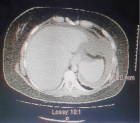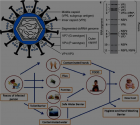About Quaid-i-Azam University
Quaid-i-Azam University
Articles by Quaid-i-Azam University
Preparation, solid state characterization and evaluation of ketoprofen-glucosamine HCl solid dispersions
Published on: 26th June, 2018
OCLC Number/Unique Identifier: 7815007894
In this investigation, solid dispersions were prepared and characterized to improve the solubility and dissolution of poorly water soluble drug Ketoprofen, using glucosamine HCl as a carrier. For the improvement of the solubility and dissolution rate of poorly water soluble drugs different techniques are used such as solubilization, salt formation, particle size reduction and solid dispersion etc, but in the present study, solid dispersions (SDs) of poorly water soluble NSAID Ketoprofen were prepared to improve its solubility and dissolution rate, using solvent evaporation method with drug-carrier ratio of 1:1, 1:2 and 1:3. Our results indicate that all solid dispersions of Ketoprofen and Glucosamine HCl exhibited more enhancements in solubility and dissolution rates than corresponding physical mixtures. The DSC thermograms and X-ray diffraction patterns showed a slight reduction in crystallinity in solid dispersions which were further verified by FT-IR and SEM. It is concluded that solid dispersion is an effective technique for enhancing the solubility and dissolution rate of poorly water-soluble drug Ketoprofen using Glucosamine HCl as a carrier. This amino sugar (Glucosamine HCl) could be used as a novel potential carrier for preparation and formulation of SDs and would have potential commercial benefits.
Role of nanotechnology in diagnosing and treating COVID-19 during the Pandemic
Published on: 27th May, 2020
The coronavirus disease 2019 (COVID-19) pandemic, caused by the severe acute respiratory syndrome coronavirus 2 (SARS-CoV-2), began in December 2019 in Wuhan, China. To date, the virus has infected roughly 5,000,000 people and caused approximately 345,000 deaths worldwide, and these numbers are increasing rapidly. Because of the rapid spread and the rising disease burden, several antiviral drugs and immunomodulators are in clinical trials, but no drugs or vaccines have yet been approved against this deadly pandemic. At present, computed tomography scanning and reverse transcription (RT)-PCR are used to diagnose COVID-19, and nanotechnology is being used to develop drugs against COVID-19. Nanotechnology also plays a role in diagnosing COVID-19. In this article, we discuss the role of nanotechnology in diagnosing and potentially treating COVID-19.
A Comprehensive review on genomic diversity and epidemiology of COVID-19
Published on: 22nd July, 2020
OCLC Number/Unique Identifier: 8639906558
A respiratory outbreak of COVID-19 started from Wuhan, China and on 30 January 2020, WHO declared this infection to be epidemic, implementing public health emergency worldwide. On 11th March 2020, observing its prevalence in the whole world and WHO declared as a pandemic. Many countries completely collapse in the grip of this pandemic, as there are no effective treatments available, the precaution is the sole remedy to minimize this infection. The emergence and pandemic of SARS-CoV-2 (since the SARS-CoV in 2002 and MERS-CoV in 2012] manifest the third time outline of highly contagious and pathogenic infection with infect-ability to spread globally in the twentieth-first century. The SARS CoV-2 genome is highly identical to bat coronavirus which is considered to be the perfect natural host. This coronavirus even utilizes the same ACE2 receptor as SARS-CoV and mainly spread the infection to the respiratory tract, which evidently showed that transmission of this virus through interactions and exposures. The death toll of these infected patients is increasing day by day especially when they have prehistory fatal diseases like cardiovascular, diabetics, and respiratory diseases. In this review, we summarized and explained the research progressed and available data on epidemiology, COVID-19 phylogenetic relation and its impact of different fatal disease and their relation and discuss the precautionary methods to combat this pandemic. Moreover, the pieces of evidence of spreading the virus through pets and prevention of being spreading by copper metal endorsement.
The expected second wave of COVID-19
Published on: 3rd September, 2020
OCLC Number/Unique Identifier: 8683049927
The pandemic of Coronavirus Disease (COVID-19) caused by Severe Acute Respiratory Syndrome Coronavirus-2 (SARS-CoV-2) continues to rise around the globe. As per 15th July 2020, the World Health Organization (WHO) reported 13,119,239 confirmed COVID-19 cases along with 573,752 confirmed deaths globally.

HSPI: We're glad you're here. Please click "create a new Query" if you are a new visitor to our website and need further information from us.
If you are already a member of our network and need to keep track of any developments regarding a question you have already submitted, click "take me to my Query."

















































































































































